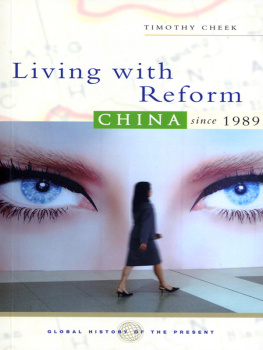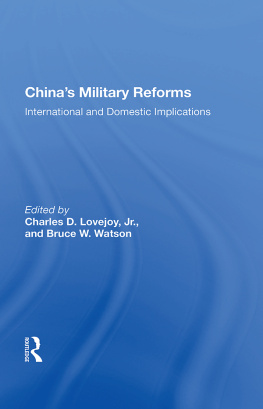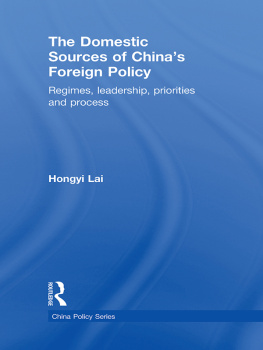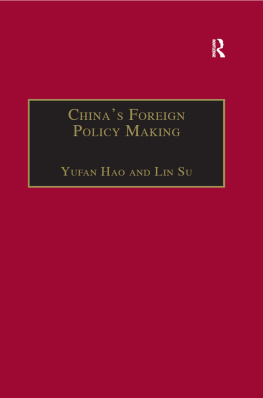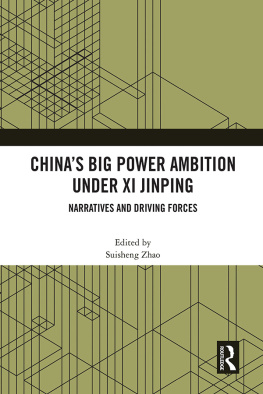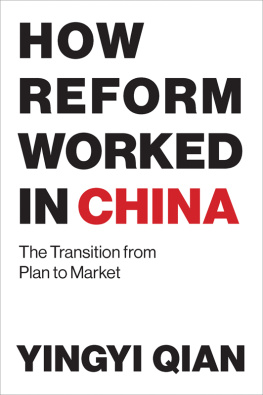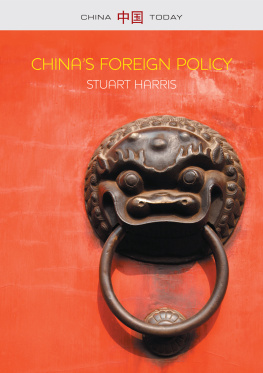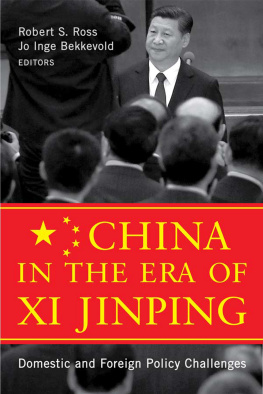
GLOBAL HISTORY OF THE PRESENT
Series editor | Nicholas Guyatt
In the Global History of the Present series, historians address the upheavals in world history since 1989, as we have lurched from the Cold War to the War on Terror. Each book considers the unique story of an individual country or region, refuting grandiose claims of the end of history, and linking local narratives to international developments.
Lively and accessible, these books are ideal introductions to the contemporary politics and history of a diverse range of countries. By bringing a historical perspective to recent debates and events, from democracy and terrorism to nationalism and globalization, the series challenges assumptions about the past and the present.
Published
Thabit A. J. Abdullah, Dictatorship, Imperialism and Chaos: Iraq since 1989
Timothy Cheek, Living with Reform: China since 1989
Alexander S. Dawson, First World Dreams: Mexico since 1989
Padraic Kenney, The Burdens of Freedom: Eastern Europe since 1989
Stephen Lovell, Destination in Doubt: Russia since 1989
Forthcoming
Alejandra Bronfman, On the Move: The Caribbean since 1989
James D. Le Sueur, Between Terror and Democracy: Algeria since 1989
Mark LeVine, Impossible Peace: Israel/Palestine since 1989
Hyung Gu Lynn, Bipolar Orders: The Two Koreas since 1989
Nivedita Menon and Aditya Nigam, Power and Contestation: India since 1989
Helena Pohlandt-McCormick, What Have We Done? South Africa since 1989
Nicholas Guyatt is assistant professor of history at Simon Fraser University in Canada.
About the author
Timothy Cheek holds the Louis Cha Chair of Chinese Research in the Institute of Asian Research at the University of British Columbia. He is also editor of the journal, Pacific Affairs. His research, teaching and translating focus on the recent history of China, especially the role of Chinese intellectuals in the twentieth century and the history of the Chinese Communist Party. His books include Mao Zedong and Chinas Revolutions (2002) and Propaganda and Culture in Maos China (1997), as well as New Perspectives on State Socialism in China (1997), with Tony Saich, and The Secret Speeches of Chairman Mao (1989) with Roderick MacFarquhar and Eugene Wu.
Living with Reform: China since 1989
Timothy Cheek
Zed Books
LONDON | NEW YORK
Living with Reform: China since 1989 was first published in 2006 by Zed Books Ltd, 7 Cynthia Street, London N1 9JF, UK and Room 400, 175 Fifth Avenue, New York, NY 10010, USA
This ebook edition was first published in 2013
Copyright Timothy Cheek, 2006
The right of Timothy Cheek to be identified as the author of this work has been asserted by him in accordance with the Copyright, Designs and Patents
Act, 1988.
Cover designed by Andrew Corbett
Set in OurTypeArnhem and Futura Bold by Ewan Smith, London
Index <>
All rights reserved. No part of this publication may be reproduced, stored in a retrieval system or transmitted in any form or by any means, electronic, mechanical, photocopying or otherwise, without the prior permission of Zed Books Ltd.
A catalogue record for this book is available from the British Library.
US CIP data are available from the Library of Congress.
ISBN 978 1 84813 727 1
Contents
Acknowledgments
I would like to thank Nick Guyatt, the general editor for Zed Books Global History of the Present series, not only for drafting me into this project but also for his steadfast editorial support and shockingly extensive (and extremely useful) commentary on the first draft. My heartfelt thanks, as well, to the editors at Zed Books, particularly Ellen McKinlay, for their patience and encouragement. I am grateful for additional comments from the external reviewer, as well as from John Friedmann, Guo Xiaolin, David Kelly, Michael Schoenhals, James Spear, and Jeffrey Wasserstrom. This book is dedicated to Song Jin for advice, example, and encouragement, but mostly for reminding me how much I have yet to learn.
T.C., Vancouver
July 2006
Chronology
| 1842 | Treaty of Nanjing ends Opium War with Britain and establishes unequal treaties |
| 1895 | China defeated by Japan in Sino-Japanese War; cedes Taiwan to Japan |
| 1905 | Qing Dynasty ends Confucian state civil service exams |
| 1911 | Republican revolution: fall of the Qing Dynasty |
| 1937 | Japan invades central China, beginning World War II in Asia |
| 194549 | Civil war in China between nationalists (GMD) and communists (CCP) |
| 1949 | Establishment of the Peoples Republic of China (PRC) under CCP and Mao Zedong |
| 195678 | Hundred Flowers Campaign followed by Anti-Rightist Campaign |
| 195860 | The Great Leap Forward; leads to famine, 195961 |
| 1960 | Soviet Union withdraws all experts from China |
| 1964 | China explodes its atom bomb |
| 196669 | The Cultural Revolution; first ended 1969, but policies continue until 1977 |
| 1972 | Rapprochement with the USA; President Richard Nixon visits China, meets Mao |
| 1976 | January: Premier Zhou Enlai dies; September: Mao Zedong dies; October: purge of radical leadership as Gang of Four, rise of Hua Guofeng as Maos successor |
| 1978 | 3rd Plenum of 11th Central Committee in December endorses Deng Xiaoping and reform |
| 1980s | China rejoins IMF and World Bank; allows joint ventures; sets up Special Economic Zones; decollectivizes farmland; Hu Yaobang becomes General Secretary and Zhao Ziyang becomes premier; leadership division over direction of reforms; Hu Yaobang resigns and top intellectuals purged, January 1987 |
| 1989 | Student protests in Tiananmen, AprilMay, and military repression on 4 June; Jiang Zemin replaces reformist leader Zhao Ziyang; Berlin Wall falls |
| 1990s | Popular patriotism education drive; Mao fever; growth of Falungong; reforms resume 1992 with Deng Xiaopings Southern Tour and confirmed at 14th Party Congress, October 1992; double-digit GDP growth for most of the decade |
| 1994 | Huai river runs black from pollution; its water not fit to drink for the rest of decade |
| 1999 | US planes bomb Chinese embassy, Belgrade, Yugoslavia |
| 2001 | September 11 attacks in USA; George W. Bush visits Shanghai and China joins War on Terror, October; China joins WTO, November |
| 2002 | 16th Party Congress, where Hu Jintao becomes General Secretary |
| 2003 | Wen Jiabao becomes Premier at 10th National Peoples Congress, March; Three Gorges Dam first stage completed; HIV-Aids scandal and SARS scare |
| 2006 | National Peoples Congress stresses harmonious society and rejects private property law |

Preface: what does Tiananmen mean?
China is huge. For those who study it, it dominates our understanding of Asia and revolves as a giant planet in the international solar system; for those who do not, it is an immense gap of 20 per cent of global population in their understanding of our world. Yet China remains a great mystery to most people, and it regularly surprises specialists. Worse, it is an oriental screen of flat images and prejudices that dangerously pass as knowledge of the worlds largest nation, the Peoples Republic of China (PRC), and ancestral home of over 100 million overseas Chinese who engage with their culture in its current nation-state.
Next page
